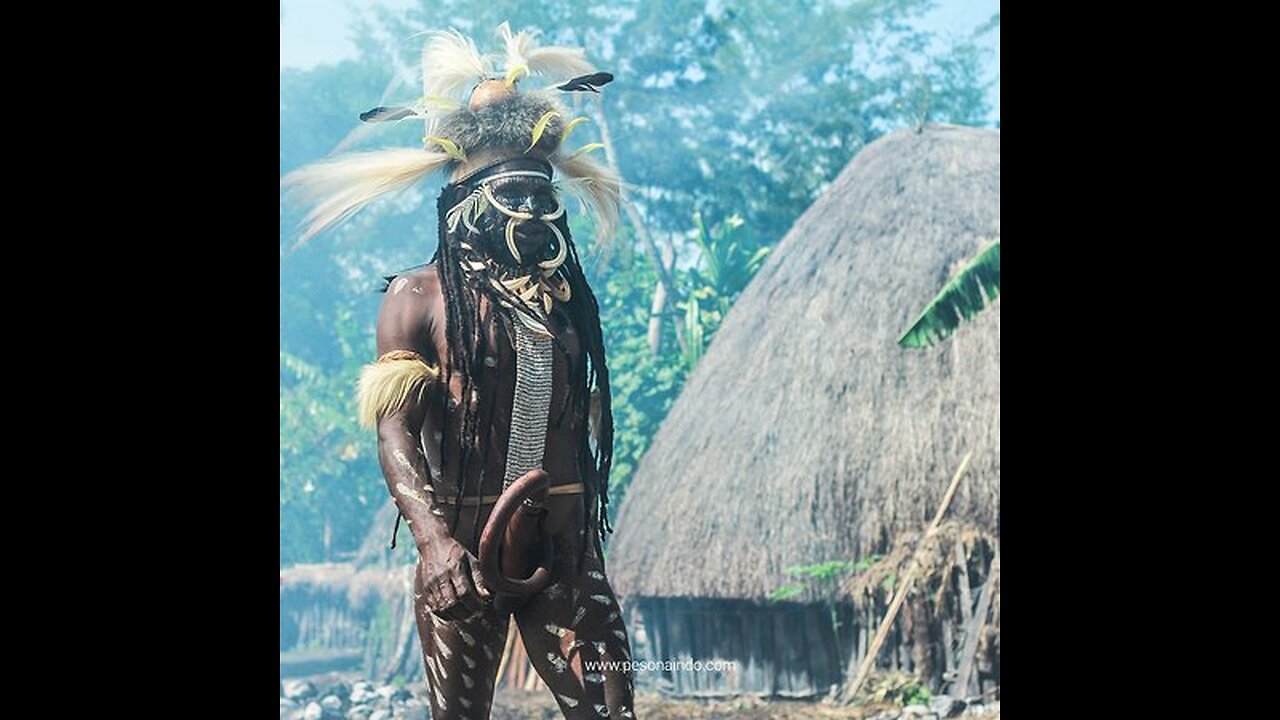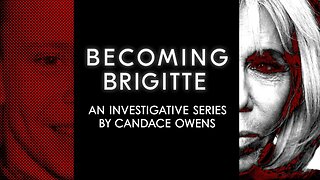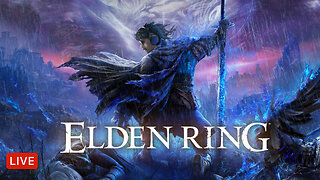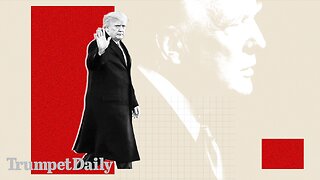Premium Only Content

Finally met the last ever cannibal tribe- KOROWAI TRIBE | Papua
Korowai is a tribe found around 35 years ago in the remote part of Papua. The population are around 3000 people. This isolated tribe lives in a tree house called Rumah Tinggi. Some houses can even reach a height of 50 meters above the ground. The Korowai are one of the mainland Papuans who don’t use “koteka”.
Korowai people lives in a forest area that is about 150 kilometers from the Arafura Sea. They are hunter-gatherers with excellent survival skills. Until around 1975, Korowai had almost no contact with the outside world. Living in a village made by the government is a relatively new phenomenon among Korowai. They built houses that were divided into two or three rooms with fire places in each room. Men and women live separately. In 1992, when the Yaniruma Village was inaugurated by the government of Boven Digoel, a documentary film makers team were finally able to visit Korowai in their settlements.
Among 1978 and 1990, Korowai still had a river. They open gardens and hunting. They were also introduced to healing methods (health program) managed by the government. However, even though knowing this, still many of them use traditional methods for curing pain.
Facts About Korowai Tribe in Southern Papua
Korowai is a tribe found around 35 years ago in the remote part of Papua. The population are around 3000 people. This isolated tribe lives in a tree house called Rumah Tinggi. Some houses can even reach a height of 50 meters above the ground. The Korowai are one of the mainland Papuans who don’t use “koteka”.
Korowai people lives in a forest area that is about 150 kilometers from the Arafura Sea. They are hunter-gatherers with excellent survival skills. Until around 1975, Korowai had almost no contact with the outside world. Living in a village made by the government is a relatively new phenomenon among Korowai. They built houses that were divided into two or three rooms with fire places in each room. Men and women live separately. In 1992, when the Yaniruma Village was inaugurated by the government of Boven Digoel, a documentary film makers team were finally able to visit Korowai in their settlements.
Among 1978 and 1990, Korowai still had a river. They open gardens and hunting. They were also introduced to healing methods (health program) managed by the government. However, even though knowing this, still many of them use traditional methods for curing pain.
korowai people way of life
Credit: CruisingIndonesia
Most of the Korowai people are still independent. They produce axes from stone, make salt and do a lot of farming. The first money introduced there came from missionaries. They also helped them with the activities and were paid by rupiah. With this money, they could buy some stuffs at local stores such as salt, clothes and razors.
Since 1990, Korowai has been involved in foreign company forestry projects. They are employed as tour guides and boat drivers although many of them didn’t graduate from elementary school. Some managed to attend secondary education in Kouh, Boven Digoel Atas. Now, Korowai youth can study in Jayapura.
Basically, Korowai lived in an isolated condition. They built a high house to protect the family, not only against wild animal attacks, but also to protect them from ward off evil spirits. For a long time, Korowai was considered very resistant to religious conversion. Then, in the last 1990s, they were baptized.
As quoted from JeratPapua.org, here are other interesting facts about Korowai Tribe lives in the southern Papua.Tree houses and customs to build a house, a large sturdy tree was chosen as the main pillar. The floor is made of branches. Sago tree skin is used to make the walls. The roof is from the leaves of the forest. To string the houses, strong rattan ropes are used. To reach the house, a long ladder is arranged downward.
Before settle the house, they will perform a night ritual to cast out evil spirits. Every family has a sago garden. They also collect green vegetables and fruits that all grow in the forest. Pigs and dogs are the only pets. Pigs have social values and only killed during rituals and on special occasions. Dogs are used for hunting. For fishing, they use bows and arrows. In the past, crocodiles were also caught for consumption.
Korowai is very concern to their customs. They know the sago party. This ritual is carried out every time when there is a birth, marriage and death. During those moments, socially valuable items such as pigs, dog teeth and shells are presented to groups that hold the rituals. The group receive the items and must pass it on for the next party.
When someone dies, land rights are passed to the descendant. Similarly, a man is inherited ’sister-in-law when his brother died, because men have to pay dowry. Men are married relatively late, at 20 years or older. Instead, the women get married after their first menstruation. Each household consists of the head of family, one or more wives and unmarried children. If the fathers dies, unmarried mothers and children shall belong to the father’s family.
In the family, parents teach their children all the rules and taboos. A young girl will be actively involved in all roles when judged to be of sufficient age. After marriage, girls are considered as adult women. Meanwhile, boys learn about how to hunt and make a house since the age of 15. During this period, the children were also taught special knowledge, the origin of life as well as how to survive.
The Korowai family is very aware of good and bad things. They also know about the balance of nature, health, sexuality and knowledge of the world. Korowai believes that the universe is filled with dangerous spiritual beings. The spirits of ancestors played a special role. Some old women, who are said to have knowledge of spirituality, are regarded as figures. They also believe, a person can transform into an animal. They also believe, the spirit of the deceased will roam around the tree house for some time.In the past, conflicts between groups were caused by adultery, theft, murder and problems caused by the practice of evil science. The ritual of cannibalism took place as a form of retaliation and punishment for evil shamans. After being killed, a person’s body parts will be divided between the clan and then eaten. In 2006, a television show filmed 60 minutes the murder of someone in the Korowai community who was punished for being a “khakhua” or a witch. He was tortured, executed, and eaten.
In the process, pregnant women and children are not involved as cannibals. Whatever happens, the killing of a clan member, usually demands revenge. Relations between groups, often dominated mutually hostile for a long time. Marriage is also a source of conflict. When a woman in a family is persecuted, it will trigger revenge. Adultery is generally resolved through the exchange of goods between the families involved. Meanwhile, women who are run by the men are usually settled by paying a dowry to the woman’s family.During the 90s, outsiders began to exploit the Korowai area to look for gaharu (Aquilaria malaccencis). In 1997, 1 kg of gaharu collected by local people and sold to traders around Rp. 4,000. When gaharu sold to European and Middle Eastern markets, the price jumps to $ 1,000/kilogram. Gaharu is thought to trigger rapid trade and lead to prostitution in the forests. As a result of free sex, the AIDS epidemic began increased. The trade faded in 1999.
Several documentary films have been made about the Korowai Tribe. In 1993, a film crew documented Korowai constructing a tree house and showing the practice of cannibalism. In 2011, the Korowai tribe was featured in the Human Planet documentary on the BBC.
Previously, Korowai also visited by Rupert Stasch, an anthropologist from Reed College, Oregon. He stayed with them for 16 months to study their native culture. The results have been published in the Oceania Journal.
The researchers consider the Korowai community quite intelligent because they are able to build the concept of settlements in areas that are actually difficult to live in. Among a number of researchers and anthropologists, perhaps the most phenomenal is from journalist named Paul Raffaele. He did only stay for four days. But Raffaele described the four-day trip in May 2006 clearly.
On the smithsonianmag.com website, Raffaele explained, even though the Korowai people has a habit of eating human meat or cannibals, it doesn’t happen at any time. “They also eat the meat of commonly hunted animals such as cassowaries, snakes, lizards, deer or wild boar. They also fulfill their nutrition by eating beetle larvae, “Raffaele said.
Based on information from Kembaren, the tour guide Raffaele at that time, the Korowai’s people so far still had the habit of eating human meat. But this ritual has been greatly reduced since they began to know the outsider. Kembaren added, almost all people in the Korowai Tribe had become cannibals. That behavior was not something taboo there.
-
 LIVE
LIVE
The Jimmy Dore Show
2 hours agoJen Psaki To Jon Stewart: MSNBC Hosts Aren't Told What To Say! JD Vance Spanks “Liberal” Europe!
18,906 watching -
 2:21:20
2:21:20
Robert Gouveia
2 hours agoTrump Goes to SCOTUS! Judge CAVES on DOGE? Fani Willis Not Happy!
29.2K5 -
 20:41
20:41
Stephen Gardner
2 hours ago🔥You Won't BELIEVE What JUST Happened To Don Trump Jr.!!
22K66 -
 LIVE
LIVE
The StoneZONE with Roger Stone
43 minutes agoEuropean Leaders Resist Trump Peace Overtures To Their Own Demise | The StoneZONE w/ Roger Stone
440 watching -
 9:29
9:29
AlaskanBallistics
2 hours agoWyoming Suppressors and Rifles at Shot Show 2025
2.41K2 -
 1:06:40
1:06:40
Donald Trump Jr.
6 hours agoThe Left is Taking one L After Another, Live with Michael Knowles | Triggered Ep. 217
92.4K73 -
 47:17
47:17
Kimberly Guilfoyle
6 hours agoWoke Gets DOGE’d, Live with AJ Rice & Jarrett Stepman | Ep. 197
70.9K30 -
 20:11
20:11
Candace Show Podcast
4 hours agoBecoming Brigitte: Candace Owens x Xavier Poussard | Ep 6
121K264 -
 LIVE
LIVE
Dr Disrespect
9 hours ago🔴LIVE - DR DISRESPECT - ELDEN RING DLC - REVENGE
2,344 watching -
 54:22
54:22
LFA TV
1 day agoThe End of the Trans-Atlantic Alliance | TRUMPET DAILY 2.17.25 7PM
20.3K1